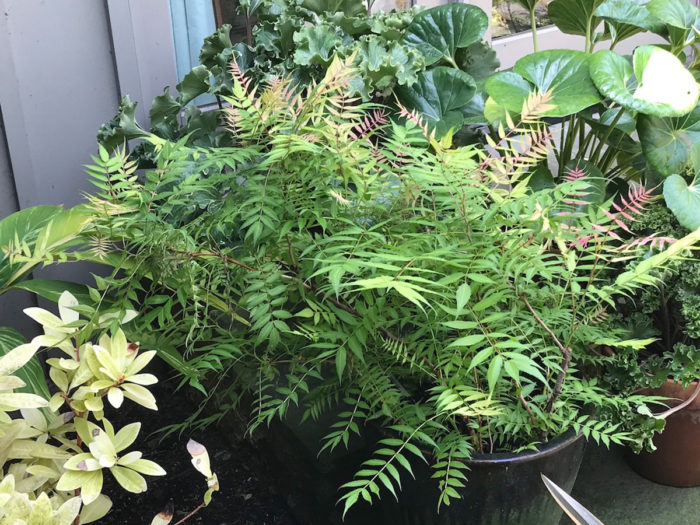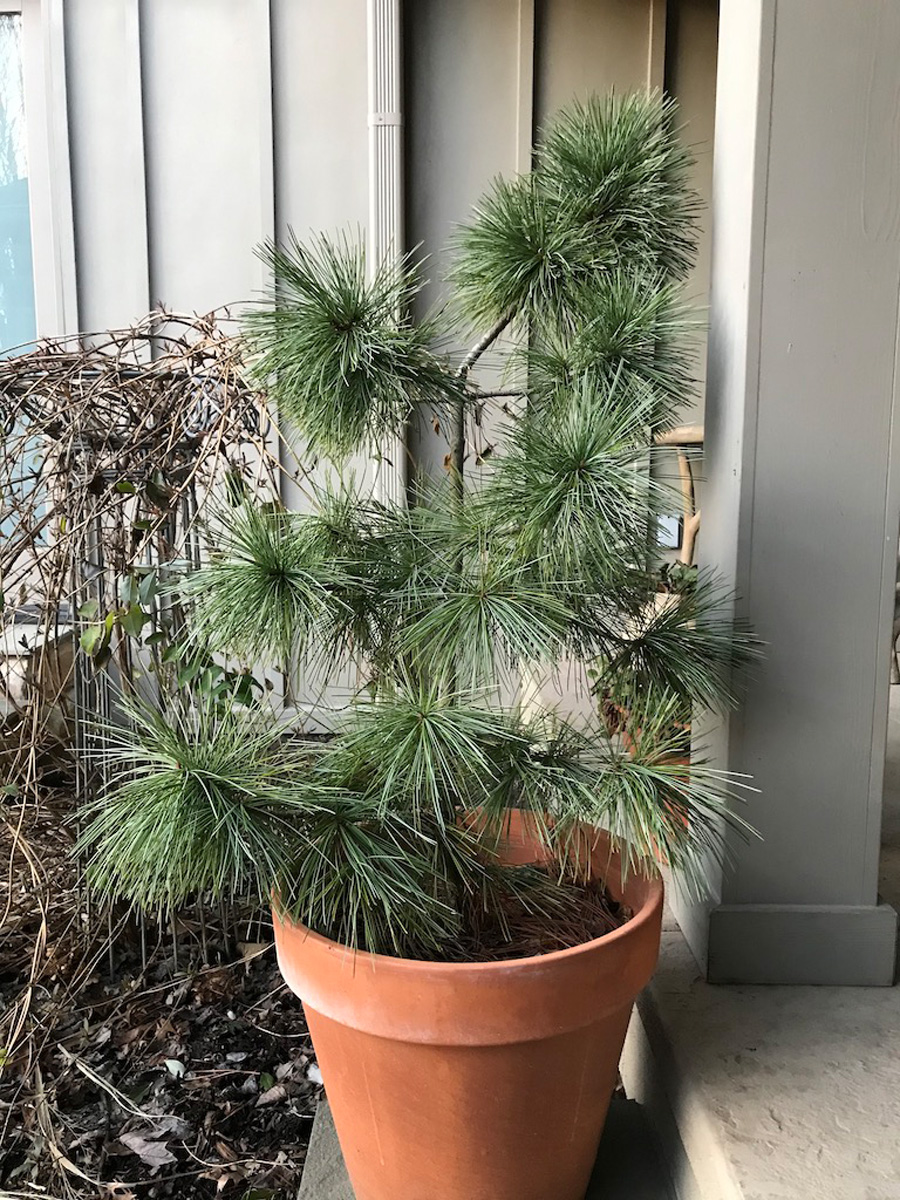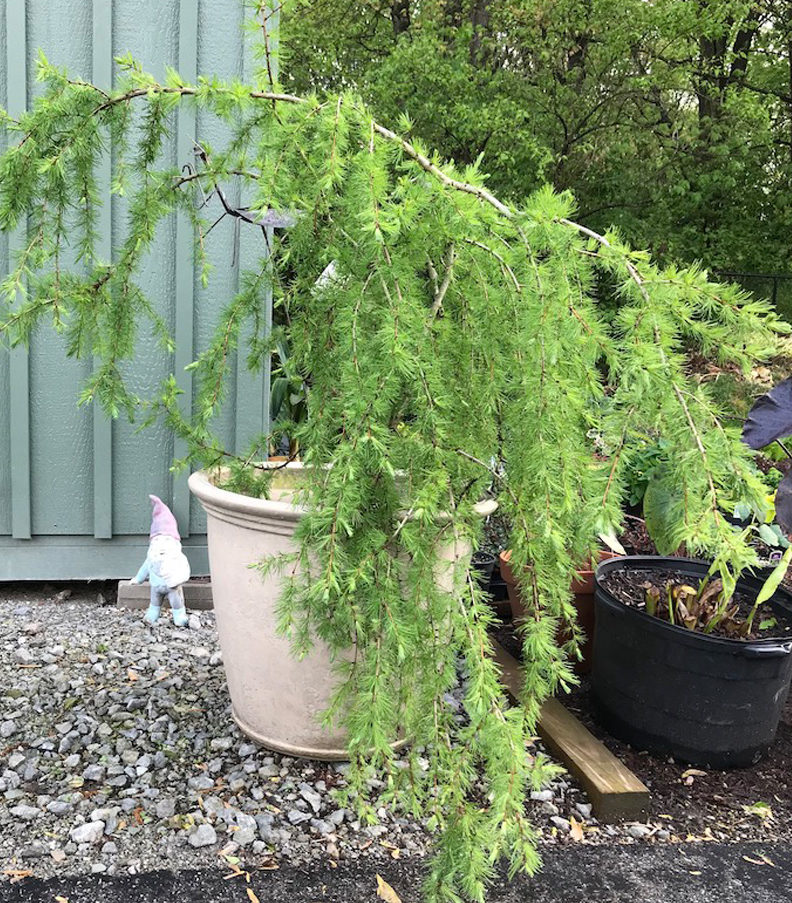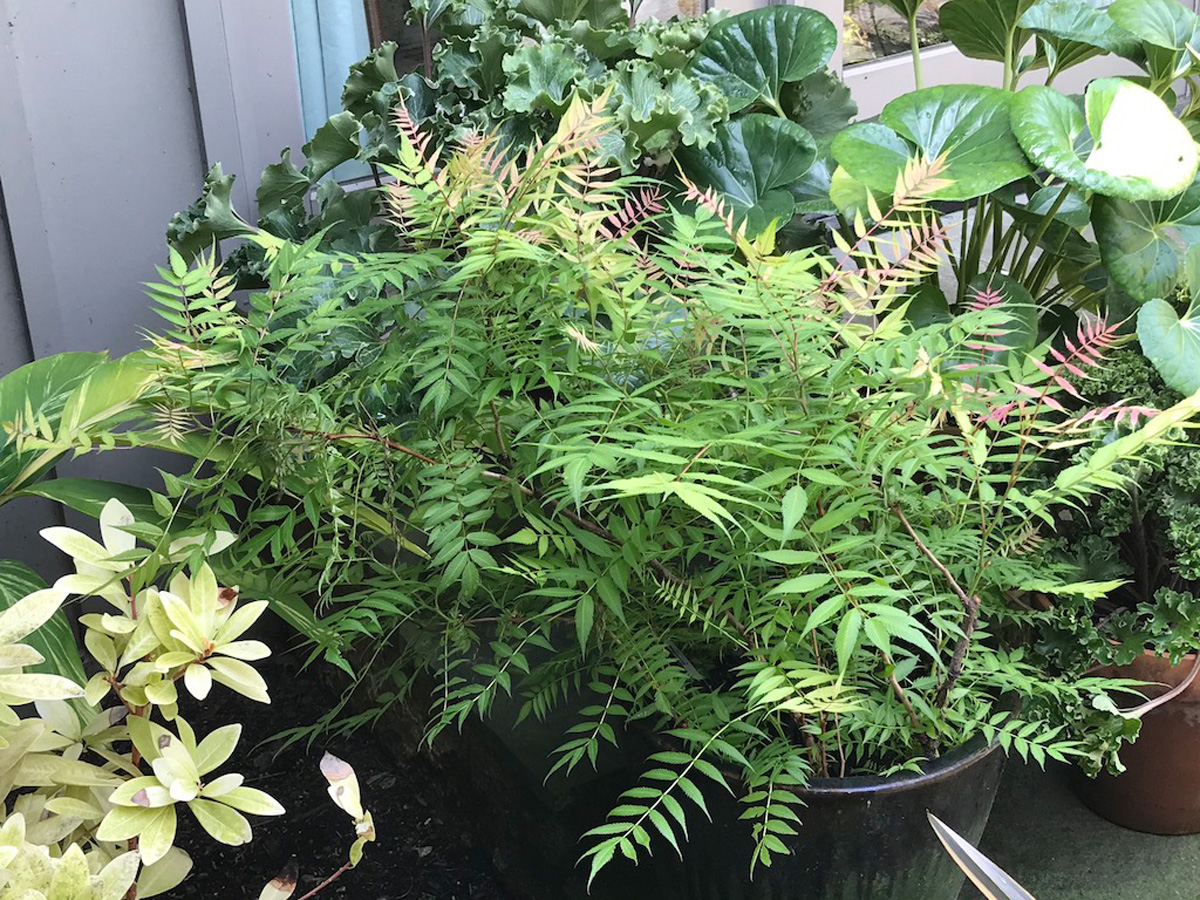Tips for Growing Trees and Shrubs in Containers
Try these hardy plant choices and get some growing advice for beautiful, year-round displays

Gardeners are gamblers by nature, taking chances based on educated guesses and hoped-for results. Conventional wisdom holds that few plants will survive growing in containers year-round, especially in the the Midwest. Most years the lowest recorded temperature in my area is below zero. But with a little extra care, the benefits of growing trees and shrubs in containers year-round can easily outweigh the risks. The practice allows for having a focal point or even providing shade in spots where there may not be soil in which to plant, such as on a patio, terrace, or driveway. You can also use containers to frame or screen. I have had success with the following specimens in containers for several years.

‘Silveray’ Korean pine
Pinus koraiensis ‘Silveray’, Zones 3–8
I have described my home landscape to some as a plant collection in search of a design, which leads to all kinds of challenges. Like many gardeners, I often obtain plants without any idea of where I will ultimately plant them. One of my had-to-have plants was Korean pine, which I admired for the beautiful effect of its long, silver-blue needles. The mature size, 30 feet high and 10 feet wide, seemed like a reasonable fit for our 2-acre garden, and I acquired it via mail order in a 2.59-quart pot and decided to plant it “temporarily” in a 14-inch terra-cotta pot and “definitely” put it in the ground that fall. I knew the risk of death by leaving plants aboveground during the cold months and the likelihood that freeze-and-thaw cycles common in our area would wreak havoc on a porous material such as terra-cotta. Needless to say, as the end of the gardening calendar drew near, I decided to take a chance by leaving the pine in the pot and pulling it onto the covered but open porch, with the recognition that excess water could destroy the container. Six years later, this little beauty continues to impress, putting on just a bit more growth each season. Site your container in full sun.

‘Nash Pendula’ weeping American larch
Larix laricina ‘Nash Pendula’, Zones 2–6
American larch is native to the upper Midwest, parts of the eastern United States, and well into Canada, which is a testament to its cold-hardiness. Attracted to these deciduous conifers partly because of their gorgeous, golden-yellow fall color, I wanted to try a couple of cultivars, including the weeping variety ‘Nash Pendula’. Against my better judgment, I ordered a 3-gallon size, which was advertised as between three and six years old and 3 to 4 feet tall. Suffice it to say that packaging makes all the difference, and what had been a carefully staked and trained specimen arrived to me in more than one piece. The beautiful contorted form that had been created was rather odd-looking once I had pruned away the broken and battered bits. Not sure what to do with it, I planted it in the ground and decided I would move it at some later date if all went well. Within a year or so, I accepted the fact that I was unlikely to maintain the proper staking it would require to have it increase in height and that the weeping branches would be better appreciated if they could cascade down a hill or ledge. With interesting topography lacking on our central Indiana property, it made sense to find a suitable container to highlight the habit. Lightweight foam polyurethane with the look of concrete fit the bill and has kept this larch going strong for years. Site your container in full sun.

‘Sem’ Ural false spirea
Sorbaria sorbifolia ‘Sem’, Zones 2–9
When I first encountered ‘Sem’ Ural false spirea, I was taken with its diminutive height and fernlike texture. It seemed to me that its foliage was less coarse than the straight species and some larger close relatives. The new growth is also quite attractive in tones of yellow, orange, pink, and red. Later, the bronze-tipped, chartreuse leaves mellow to a medium green. The creamy-white flowers, arranged in upright panicles, perfectly complement the foliage without detracting from the overall appearance. What initially gave me pause about growing this plant in the landscape was its suckering habit and tendency to spread several feet (at least) beyond its original site. I was familiar with a planting of Kashmir false spirea (Sorbaria tomentosa var. angustifolia, Zones 5–8) in which the gardeners had installed a metal barrier several inches into the soil to prevent it from getting out of bounds. I wasn’t sure if I wanted to go to that extent or if I would simply plant my false spirea where it would be allowed to creep outward, maybe indefinitely. Wanting to enjoy it more easily and close-up, I settled on growing ‘Sem’ Ural false spirea, perhaps temporarily, in a container on the steps from the house to the patio. As winter approached during its first year at home, I opted to leave it in the glazed ceramic pot and tuck it up against the house and under the eave to prevent too much moisture from accumulating in the soil over the winter, which could potentially expand and crack even a frost-resistant container. My benign neglect has led to it living for seven years now in the same 14-inch pot. I no longer think about planting in the ground and don’t worry about its spread, but I am considering putting in a larger container. Site your container in full sun to partial shade.
Tips for growing trees and shrubs in containers
- Trees and shrubs grown in containers should be cold hardy to at least one zone above where you live to account for having roots more exposed to the cold than if they were planted in the ground.
- Certain species and cultivars of shade, fruit, and evergreen trees can still attain impressive yet manageable sizes in planters just a few feet across. Limiting the root zone will naturally reduce the growth of a plant, and you can take it a step further by periodically removing the plant and trimming the roots, much like what is done with bonsai trees.
- Importantly, planters that are taller than they are wide will drain better, which is imperative. Keep in mind that a container with a convex profile (narrower at the top than down the sides) will make removing the plant difficult once the roots have filled in. Be sure to use a potting mix formulated for containers (no topsoil), and amend it with coarse sand or chicken grit for even sharper drainage.
- Use a container at least 20 inches in diameter, as that tends to reduce the stress caused by temperature and moisture fluctuations.
- An attractively designed container made from wood, concrete, fiberglass, heavy plastic, or other frost-resistant materials should be simple enough so as not to detract from the plant itself. Metal can be used as a liner in a container made from other materials, but by itself it will conduct too much heat and cold in response to temperature and sun exposure, and terra-cotta is often susceptible to cracking over time.
- As with other container plantings, more watering will be required than for a tree or shrub planted in the ground, and it may be occasionally necessary from late fall to early spring when temperatures are above freezing.
- Lightly fertilize in spring through midsummer, but discontinue as fall approaches to ready the plant for its dormant period.
- Consider a mulch of stones, shredded bark, or other wood by-products, or a simple underplanting of moss or a small-scale ground cover to enhance appearance, conserve moisture, and suppress weeds.
—Jim Kincannon is a graduate of the School of Professional Horticulture at the New York Botanical Garden, where he also earned a certificate in landscape design. He is a Master Gardener and was a horticulturist at Newfields in Indianapolis, where he now volunteers.
Fine Gardening Recommended Products

The Nature of Oaks: The Rich Ecology of Our Most Essential Native Trees
Fine Gardening receives a commission for items purchased through links on this site, including Amazon Associates and other affiliate advertising programs.

Pruning Simplified: A Step-by-Step Guide to 50 Popular Trees and Shrubs
Fine Gardening receives a commission for items purchased through links on this site, including Amazon Associates and other affiliate advertising programs.

DeWit Spring Tine Cultivator
Fine Gardening receives a commission for items purchased through links on this site, including Amazon Associates and other affiliate advertising programs.







Comments
Log in or create an account to post a comment.
Sign up Log in